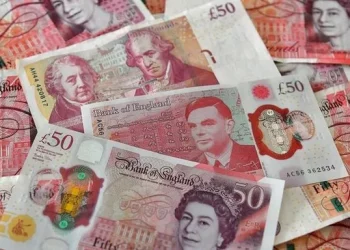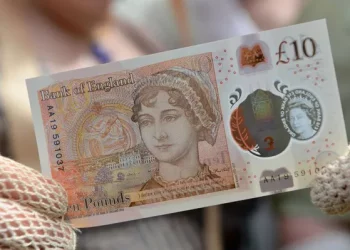The foreign exchange market, often referred to as Forex or FX, is a global marketplace for trading currencies. It operates 24 hours a day, five days a week, making it the largest and most liquid financial market in the world. One of the most commonly traded currency pairs involves the Canadian Dollar (CAD) and the Indian Rupee (INR). In this article, we’ll explore how much 2000 CAD is in INR and the factors influencing this exchange rate. Additionally, we will delve into the broader dynamics of the Forex market, strategies to manage currency exchange, and tips for securing the best rates.
Understanding the Basics of Currency Exchange
Currency exchange rates determine how much one currency is worth in terms of another. For instance, the exchange rate between CAD and INR fluctuates based on multiple factors, including economic conditions, monetary policy, geopolitical events, and market sentiment.
As of the latest data (which fluctuates continuously in real-time), the exchange rate might look like this: 1 CAD = 60 INR (hypothetical rate for demonstration purposes).
Thus: 2000 CAD = 2000 × 60 = 120,000 INR.
However, these rates are not fixed and vary depending on several factors, as discussed below.
Factors Affecting the CAD to INR Exchange Rate
Economic Conditions
- Canada: The value of the CAD is heavily influenced by Canada’s economic performance, especially its reliance on commodities like oil, natural gas, and minerals. When oil prices rise, the CAD typically strengthens as Canada is a major oil exporter.
- India: The Indian Rupee’s performance is tied to factors such as inflation, GDP growth, and the balance of trade. India’s reliance on oil imports means that rising global oil prices can weaken the INR due to increased import costs.
Interest Rates
Central banks, such as the Bank of Canada (BoC) and the Reserve Bank of India (RBI), play a critical role in setting interest rates. Higher interest rates in Canada can attract foreign investments, strengthening the CAD. Conversely, lower interest rates in India can weaken the INR by reducing its attractiveness to investors.
Inflation Rates
Inflation erodes purchasing power. A country with consistently high inflation relative to its trading partners will likely see its currency weaken over time. If India’s inflation rate is higher than Canada’s, the INR could depreciate against the CAD.
Political Stability
Investors tend to favor currencies from politically stable countries. While both Canada and India are democracies, any political uncertainty, such as elections, reforms, or trade disputes, can impact exchange rates.
Market Sentiment and Speculation
Traders and investors in the Forex market often speculate on currency movements based on news, economic data, and geopolitical events. This speculation can cause short-term volatility in CAD/INR exchange rates.
Global Events
Events such as wars, pandemics, or natural disasters can disrupt economic activities and affect currency values. For example, the COVID-19 pandemic led to significant volatility in global currency markets.
How Exchange Rates are Quoted
Exchange rates can be quoted in two formats:
Direct Quote: The domestic currency is expressed in terms of one unit of the foreign currency. For example, 1 CAD = 60 INR.
Indirect Quote: The foreign currency is expressed in terms of one unit of the domestic currency. For example, 1 INR = 0.0167 CAD.
Most financial institutions and Forex platforms use the direct quote system for simplicity.
How to Convert 2000 CAD to INR
Use a Forex Calculator or Converter
Online tools provided by Forex platforms, banks, or currency exchange websites can instantly convert 2000 CAD to INR using real-time rates.
Interbank Rates vs. Retail Rates
The interbank rate is the rate at which banks trade currencies with each other. This rate is the most accurate but is rarely available to retail customers.
Retail customers often receive a marked-up rate that includes fees or commissions charged by banks and Forex providers.
Example Calculation
Suppose the real-time exchange rate is 1 CAD = 59.85 INR. The conversion for 2000 CAD would be: 2000×59.85=119,700 INR
Keep in mind that transaction fees or commissions might slightly reduce the final amount received.
Strategies to Optimize Your Currency Exchange
If you’re planning to exchange 2000 CAD to INR, here are some strategies to get the best rates:
Monitor Exchange Rates
Keep an eye on Forex trends and exchange rates using apps or online tools. Timing your exchange when rates are favorable can make a significant difference.
Choose the Right Provider
Banks, Forex brokers, and online platforms offer varying rates. Compare rates across multiple providers to find the best deal. Online platforms often provide competitive rates due to lower overhead costs.
Avoid Airport or Last-Minute Exchanges
Currency exchange counters at airports or last-minute services often have the highest markups. Plan ahead to avoid such scenarios.
Use Forex Cards
Forex cards are preloaded with a specific currency at a fixed rate. They are convenient, secure, and often come with lower fees compared to cash exchanges.
Leverage Hedging Tools
If you’re a business or an investor dealing with frequent currency exchanges, consider hedging tools like forward contracts or options to lock in favorable rates.
The Role of Forex Platforms in CAD/INR Exchange
Several Forex platforms facilitate currency exchange, offering tools for individuals, businesses, and traders:
Retail Forex Providers
Platforms like Wise (formerly TransferWise), OFX, and Western Union provide competitive rates for personal transactions.
Forex Brokers
If you’re a trader looking to profit from CAD/INR fluctuations, brokers like OANDA, Forex.com, and Interactive Brokers offer access to currency pairs with leverage options.
Bank Services
Most banks provide currency exchange services, but their rates may include higher markups compared to dedicated Forex providers.
Risks Associated with Currency Exchange
Exchange Rate Volatility
Currency values can fluctuate significantly in a short period, exposing you to risk if you delay your exchange.
Hidden Fees
Always check for hidden charges, such as conversion fees, transaction fees, or unfavorable spreads.
Regulatory Risks
Certain countries impose restrictions on currency flows, which can impact your ability to exchange CAD to INR freely.
Forecast for CAD/INR Exchange Rate
Predicting future exchange rates is complex due to the multitude of influencing factors. However, some trends can provide insights:
Strength of the Canadian Economy
If oil prices rise and Canada’s economy remains robust, the CAD may strengthen.
India’s Economic Growth
India’s economy is one of the fastest-growing globally. A strong performance may bolster the INR in the long term.
Global Market Conditions
Changes in global trade dynamics, geopolitical stability, or monetary policies by major central banks can influence the CAD/INR pair.
Conclusion
The question of “How much is 2000 CAD to INR?” is not merely a mathematical exercise but a gateway to understanding the broader dynamics of the Forex market. Exchange rates are influenced by economic conditions, geopolitical factors, and market sentiment, all of which require careful consideration.
By leveraging tools, timing your exchange, and understanding the factors at play, you can optimize the conversion process. Whether you’re a trader, a traveler, or a business owner, staying informed and proactive will help you navigate the complex world of foreign exchange with confidence.
Related Topics:

























